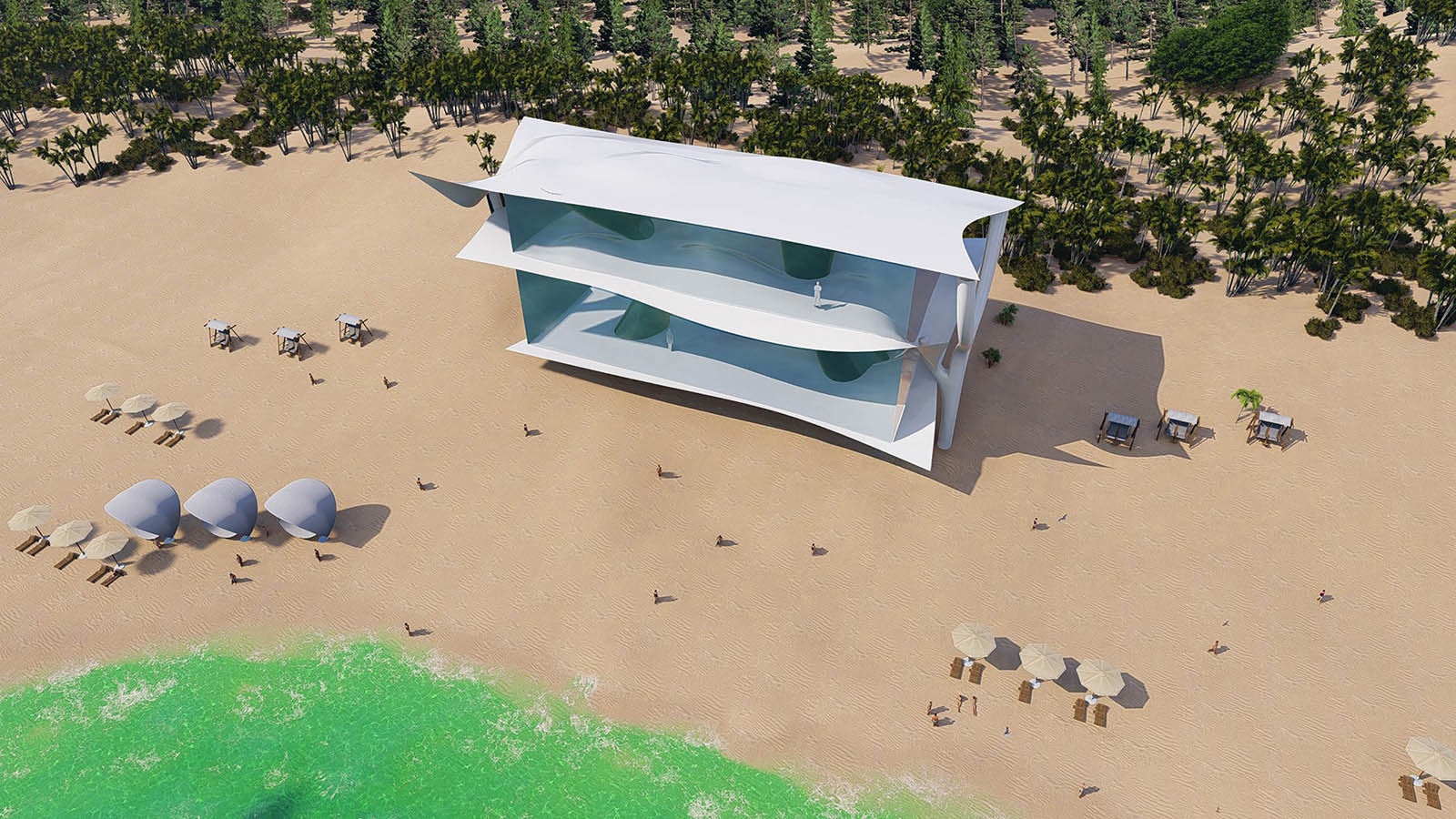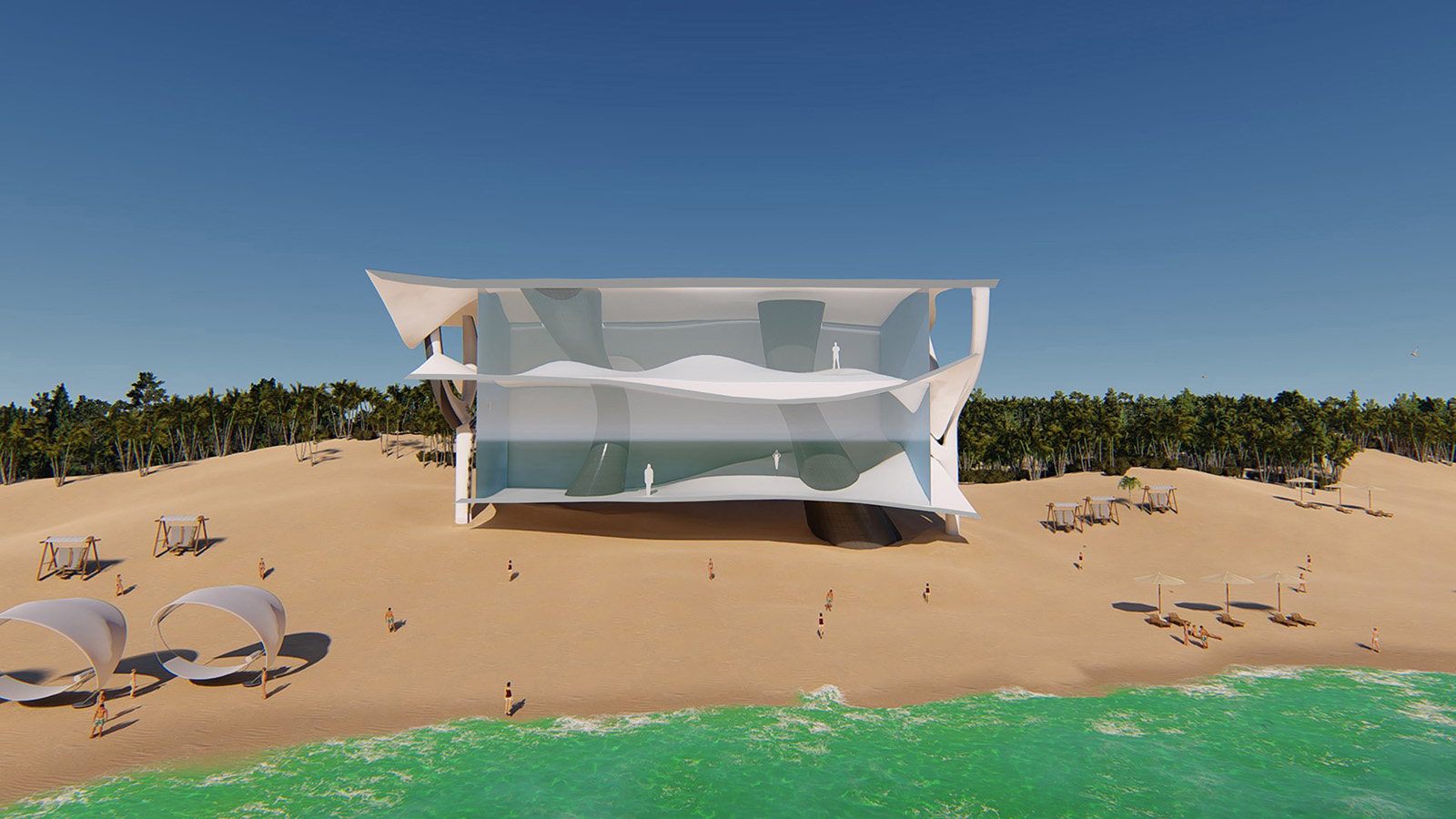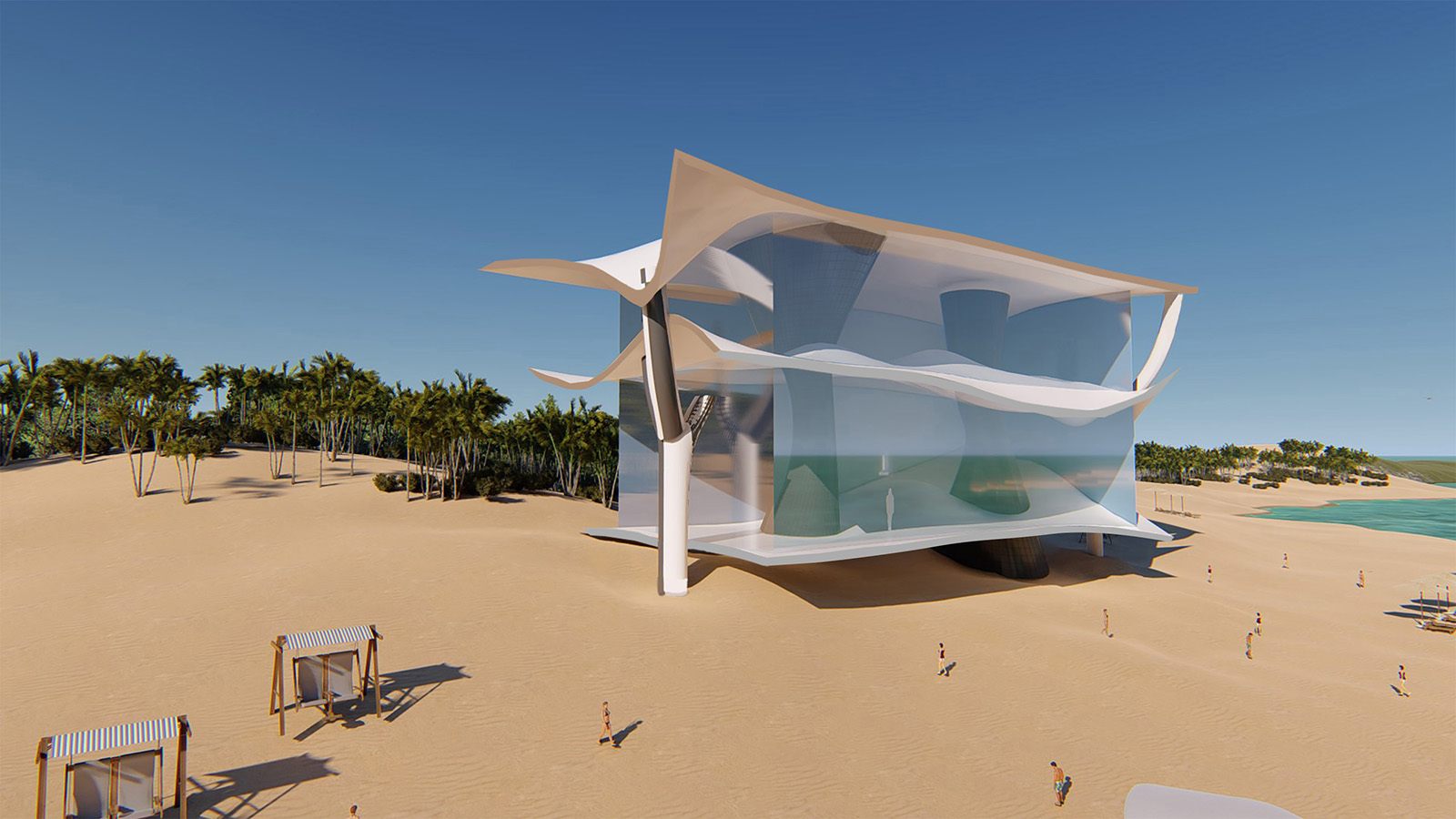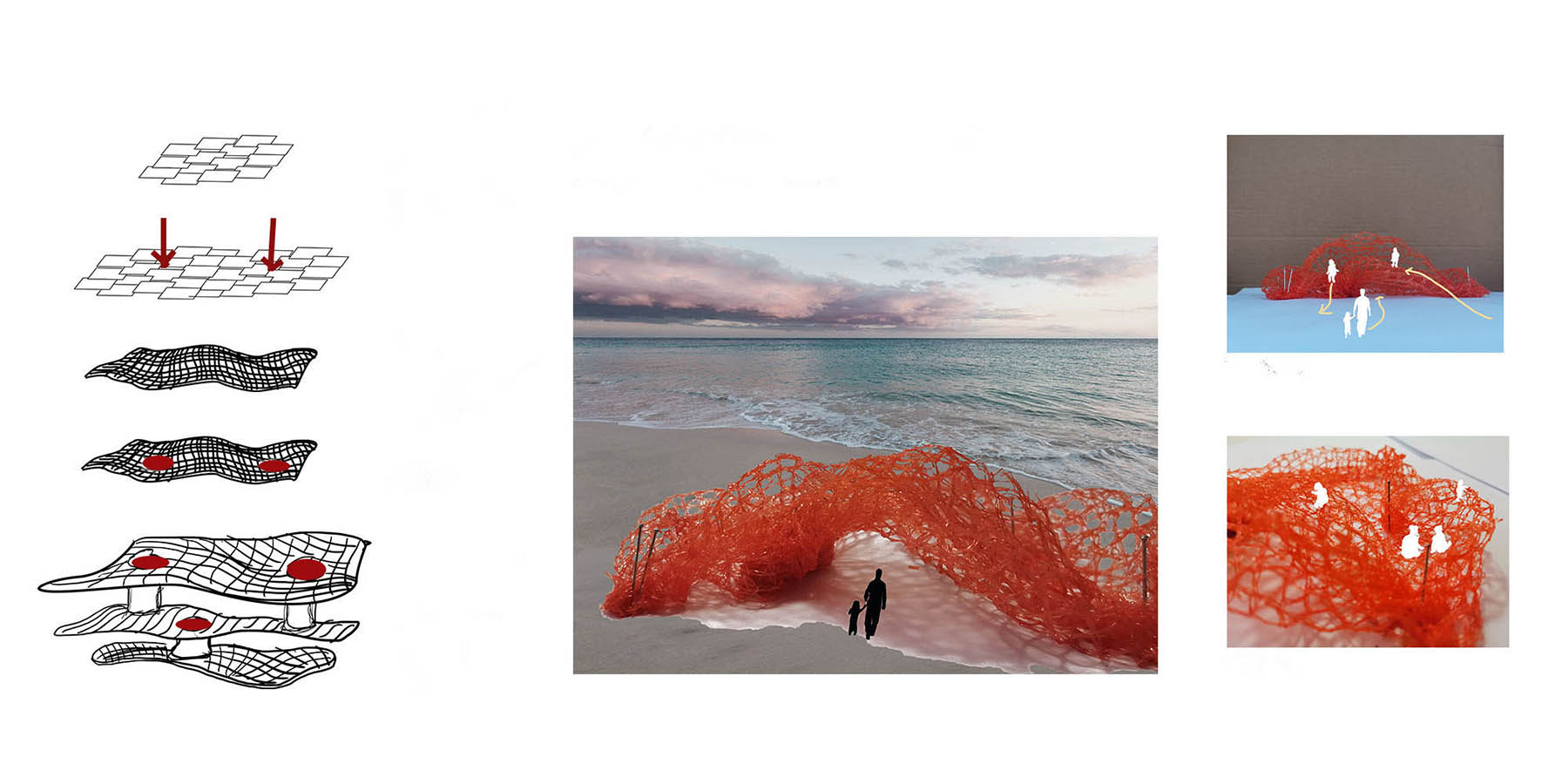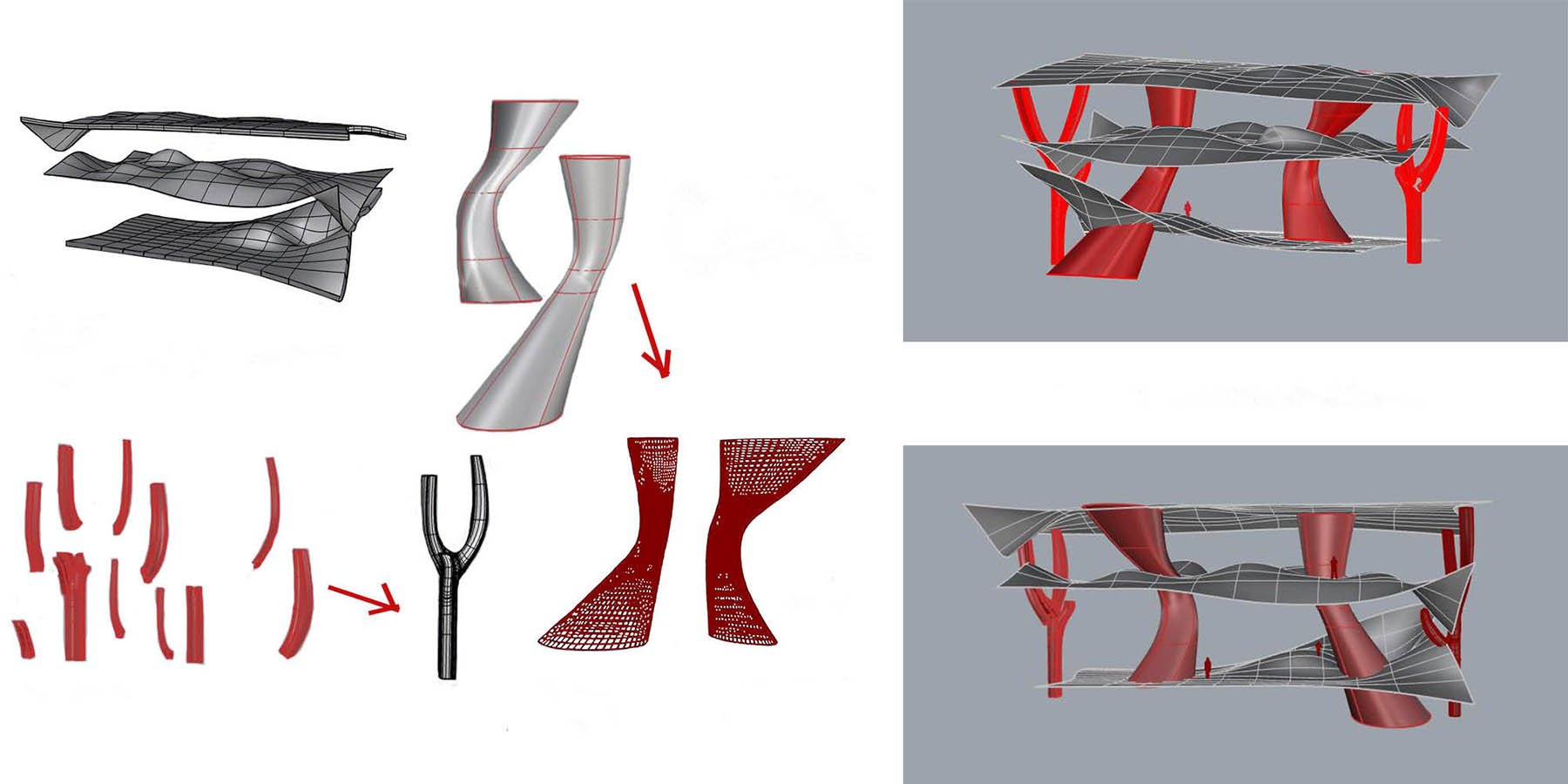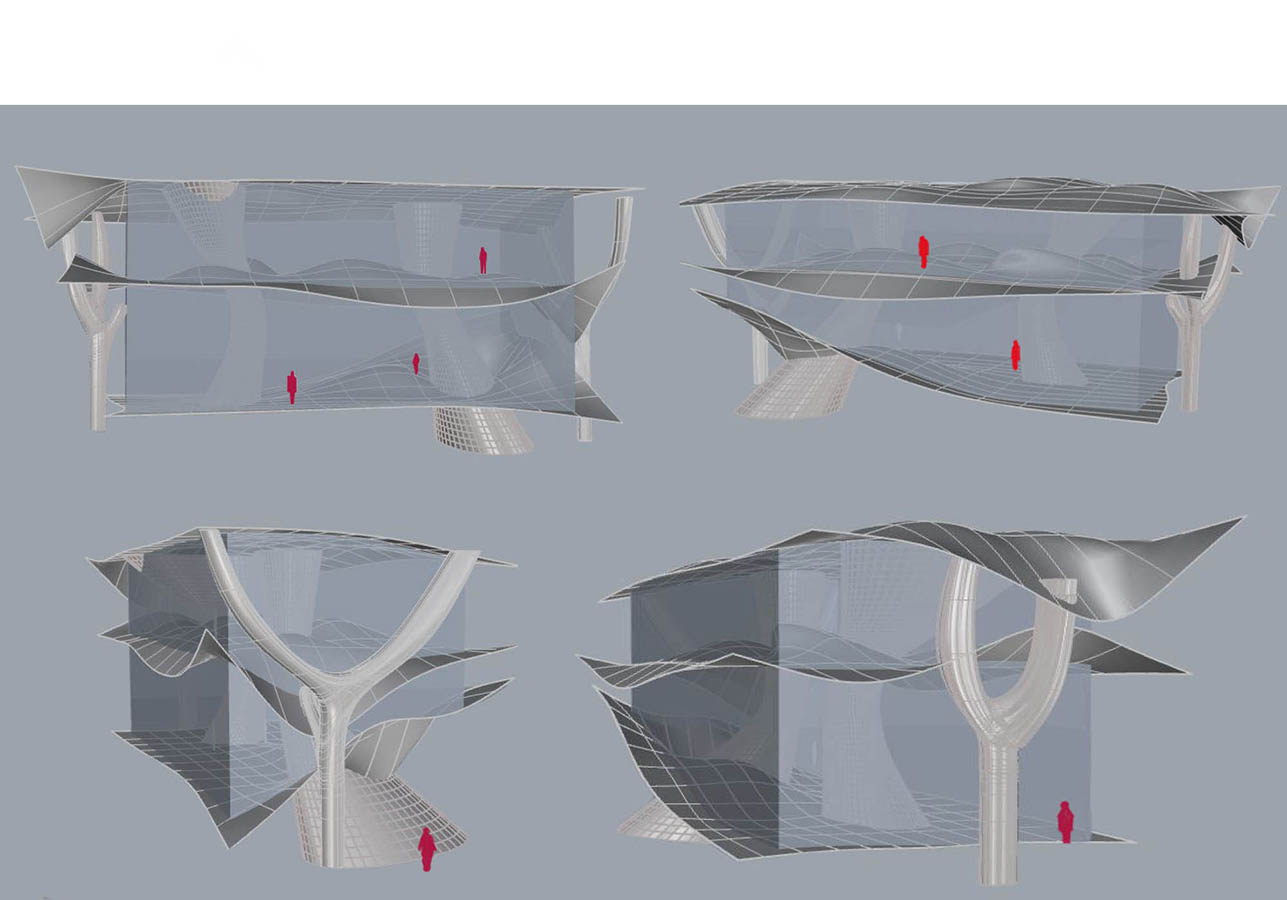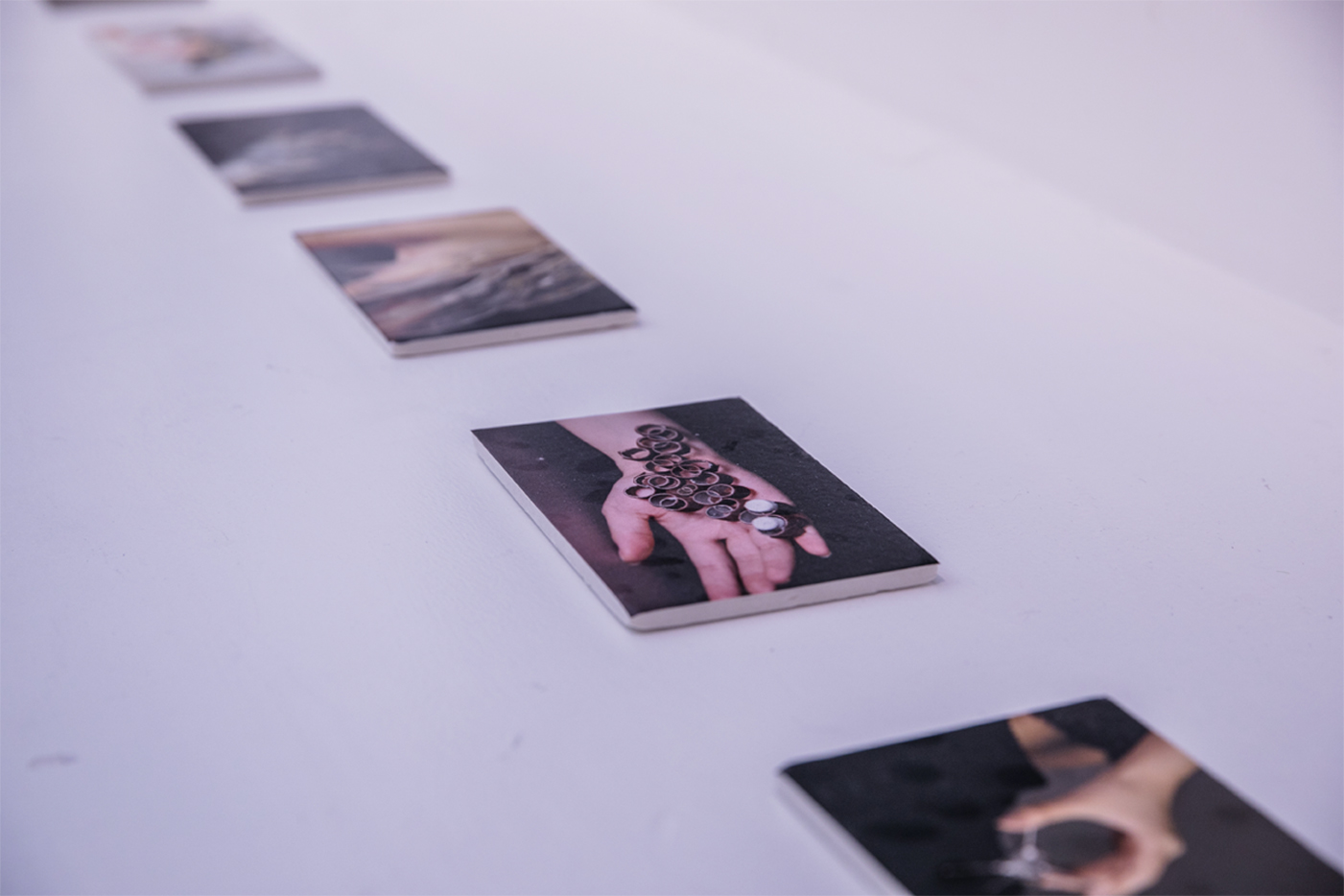

这个作品的名字是“海边博物馆——致力于海洋生物保护”。 作品概念是尝试采用旧的人工材料进行“重新启用”,赋予它们一种新的功能。我尝试把可持续利用和二次使用的概念融入到作品中,同时尝试去解决现存的一个问题。世界海洋保护组织发表过一篇文章,如今越来越多的海洋生物被幽灵渔具所迫害。幽灵渔具多是指废弃、丢失或以其他方式丢弃的渔具,一般化身为渔网、渔线和渔栅。它们是大量海洋动物死亡的罪魁祸首,像幽灵一般存在,缠绕海洋生物的颈部、鱼鳍等部位,使之无法呼吸,无法动弹,最终死于窒息或者饥饿。因此,我选择运用回收的废弃渔网材料作为作品的一部分,试图在日常生活中给人们提供可以了解和感受这种人工材料的机会,让人们可以直接的接触和触摸到,希望能进一步促使人们思考人工制品对于环境以及其他生物的危害。
作品被建造在海边的沙滩上,渔网材料可以从当地获得,这也进一步减少了运输资源的消耗和浪费。建筑一共有两层,楼层地面的起伏结合了海浪的形状,通往不同楼层的工具是被固定好的网,它的底部不直接接触到地面,提供了一个可供人们活动的空间。在创作过程中,我运用了犀牛软件进行基础模型制作,最后运用Lumion软件以动画形式呈现了最终效果。This work is called Museum for the Ocean life Recovery .The concept of this work is to try to recycle old, artificial materials and give them a new function. I have always been concerned with public welfare activities and environmental protection, so I incorporate these elements of "reuse" or "sustainable use" into my works. In this work, I also tried to solve a problem. The world Marine conservation organization once published an article emphasizing more and more Marine creatures are being persecuted by ghost gear, which refers to discarded, lost or otherwise discarded fishing facilities, generally used as nets, lines and traps. Based on this situation, the material of this work I chosen is discarded nets that are mainly old fishing nets that people throw away in the ocean or on the beach. As a part of the building, this material is applied to people's life, people can directly feel and touch it. It is hoped that this will prompt people to rethink about the harm of artifacts to environment or other creatures.
I got some inspiration from three designs. Firstly, Toyo ito’s work gives me the inspiration for transforming the traditional universal building support structure. Secondly, Marcel Wanders's work ‘Knotted Chair’ also provides a structural inspiration for how to support the net in the work by connecting multiple ropes together to form a fixed support structure with multiple sections. The third one is that from the installation of the Brazil pavilion at expo milano 2015, providing some ideas on building a network.This building is built in the coast. The material can be obtained locally, it would reduce the waste of both human and material resources. It has three layers, the ground floors combined with the shape of the waves, the upper and lower layers are connected by tensile netted structure. People can enter different floors through these fixed nets. The bottom of the building is not directly on the ground. They have some space in between, providing an extra space for people to performing the activities. In the process of making the model, I first tested a physical model with net material, then made a software model with rhino, and then made an animation with Lumion to show the final expression effect.

